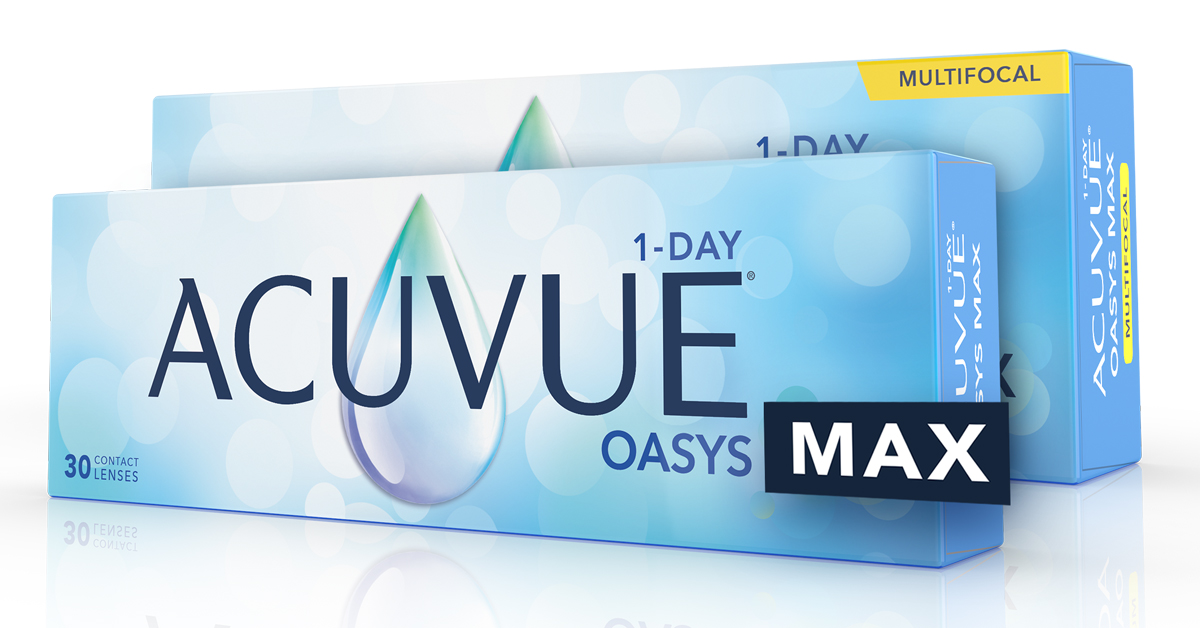 |
Extended periods of screen time disrupt the tear film, exacerbating feelings of dry eye, and contribute to symptoms of asthenopia—two effects that particularly impinge on contact lens wear. Recognizing these circumstances as a fact of modern life, Johnson & Johnson Vision designed its newest Acuvue lens to work within those constraints and minimize the adverse effects, the company says.
The lens, called Acuvue Oasys Max 1-Day, was announced in June and is now available for purchase, according to J&J. It shares with the existing Oasys 1-Day lens a 38% water content silicone hydrogel material (senofilcon A). But this one also includes two design elements intended by the company to combat digital eyestrain. The first is a new polymerization process that J&J says optimizes wetting agent distribution throughout the lens and at the surface to maximize tear film stability, reduce evaporation and lock in moisture; the company calls this design “TearStable technology.” The second differentiator between the Oasys Max and other Oasys lenses is a blue light filter (called “OptiBlue” by the company) that J&J says will block 60% of blue-violet wavelengths to reduce light scatter, improving visual clarity. Like other lenses, Oasys Max also blocks UVA and UVB rays.
The following power ranges and base curves are available for Oasys Max 1-Day:
- Single vision: -12.00D to +8.00D in 0.25D steps (0.50D steps above ±6.00D), base curves: 8.5mm and 9.0mm.
- Multifocal: -9.00D to +6.00D (0.25D steps) with adds of low (+0.75D to +1.25D), mid (+1.50D to +1.75D) and high (+2.00D to +2.50D); base curve 8.4mm.
For more information, visit www.acuvue.com.


